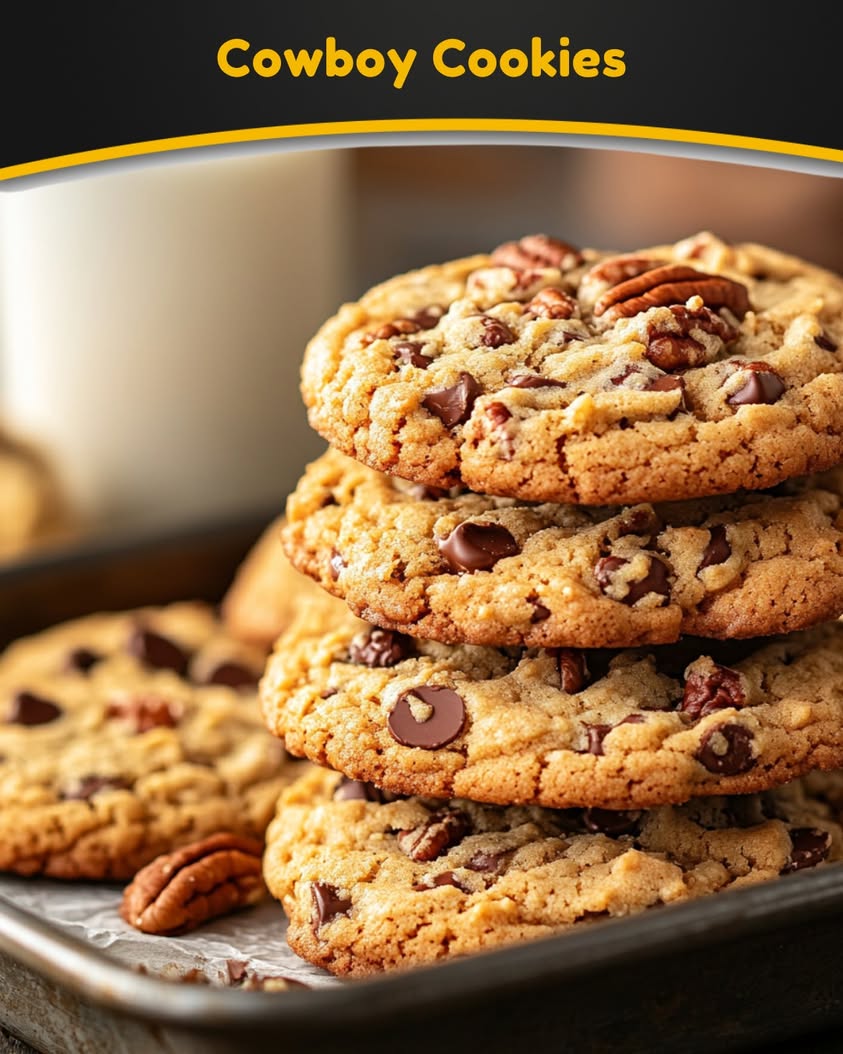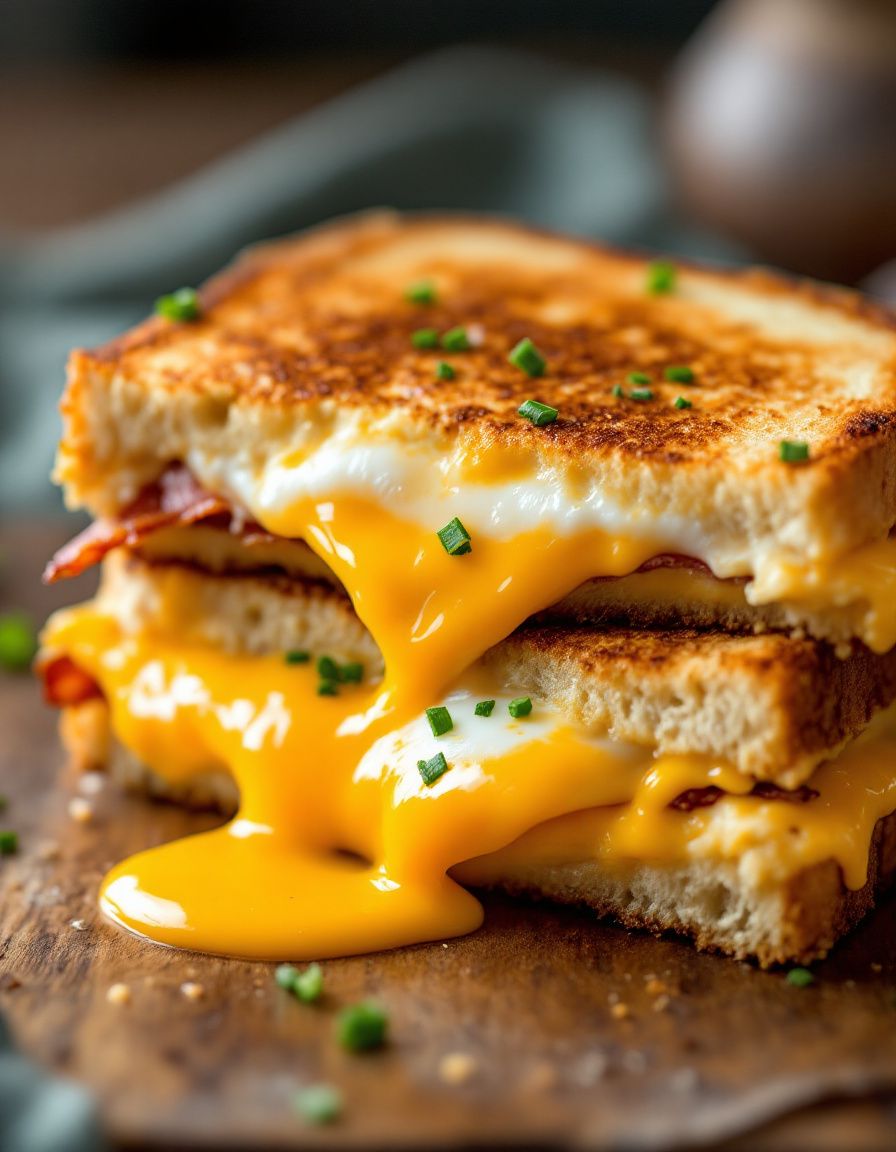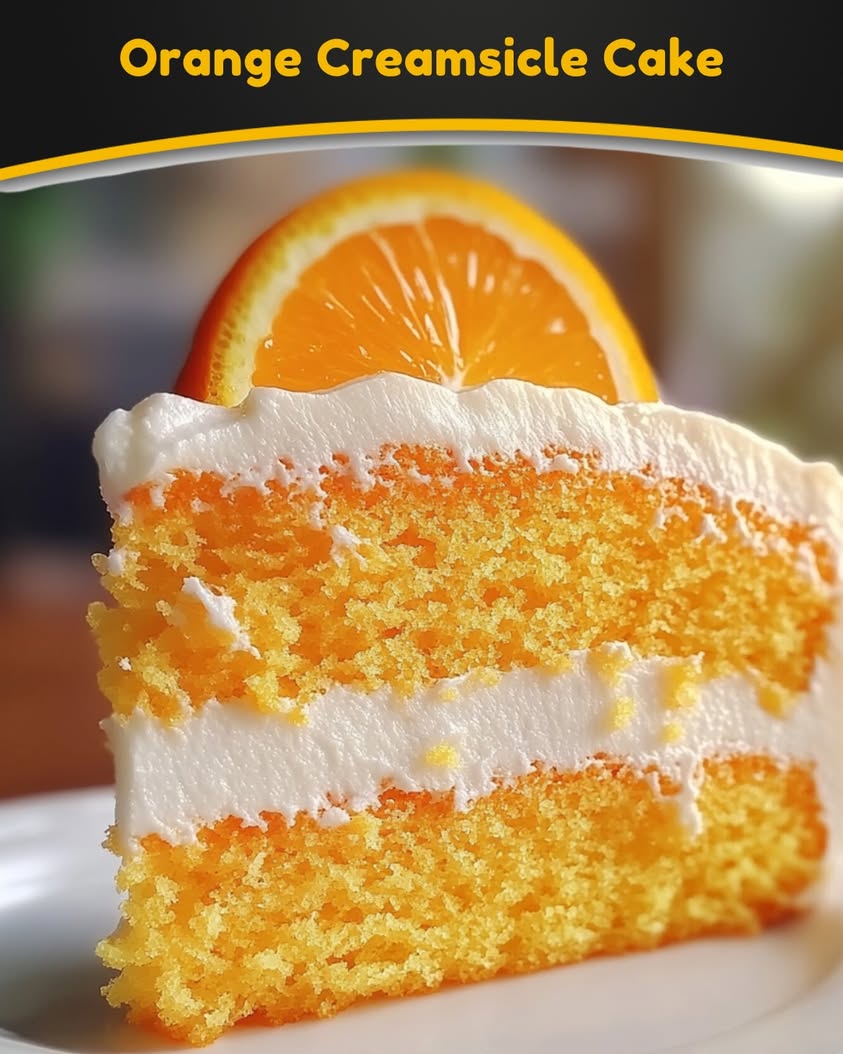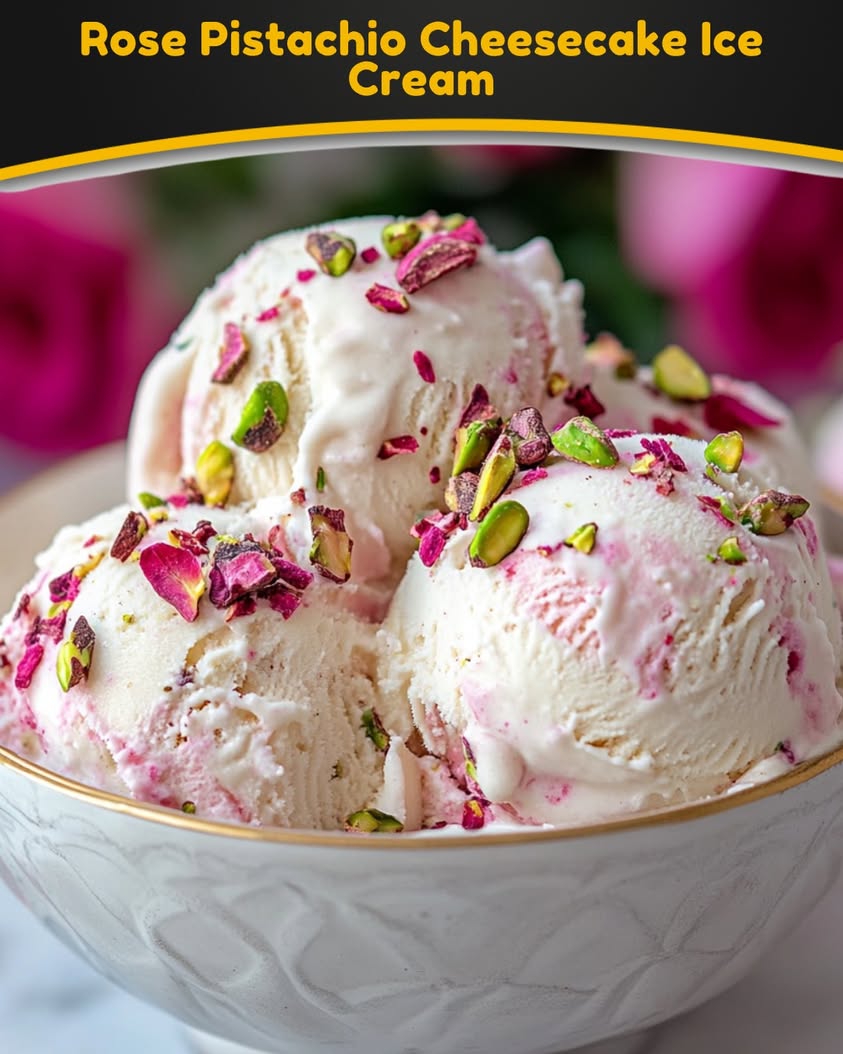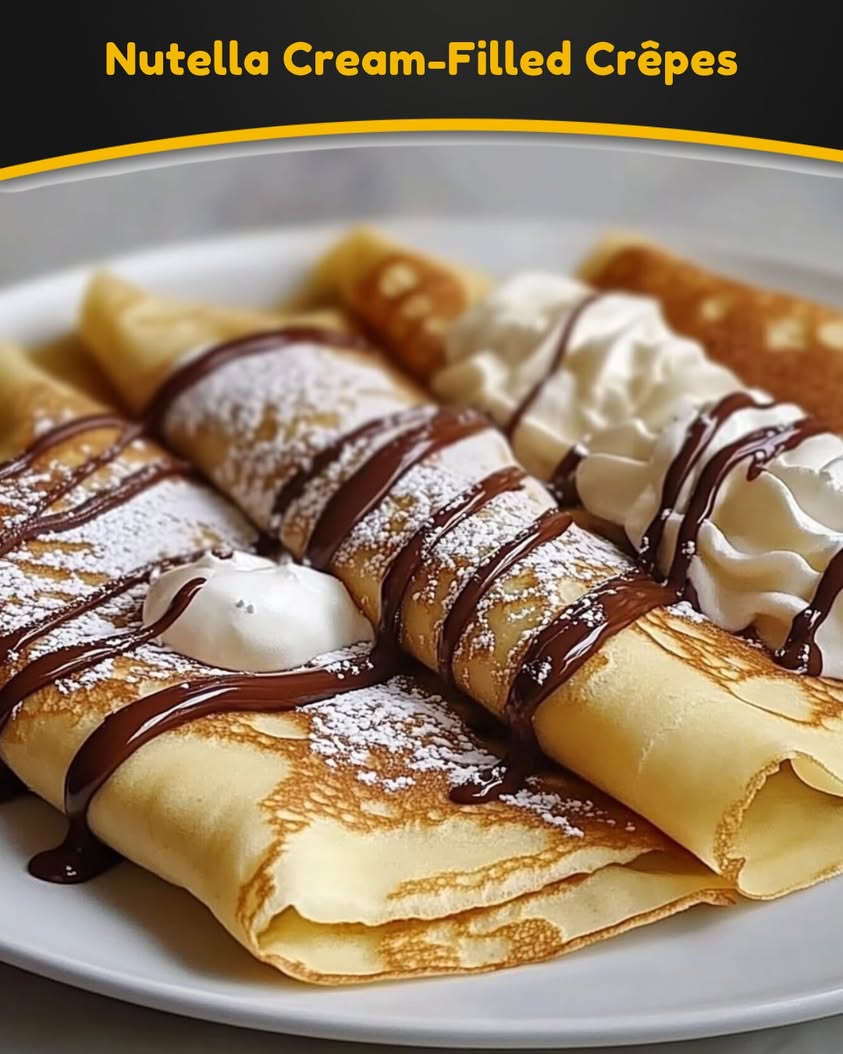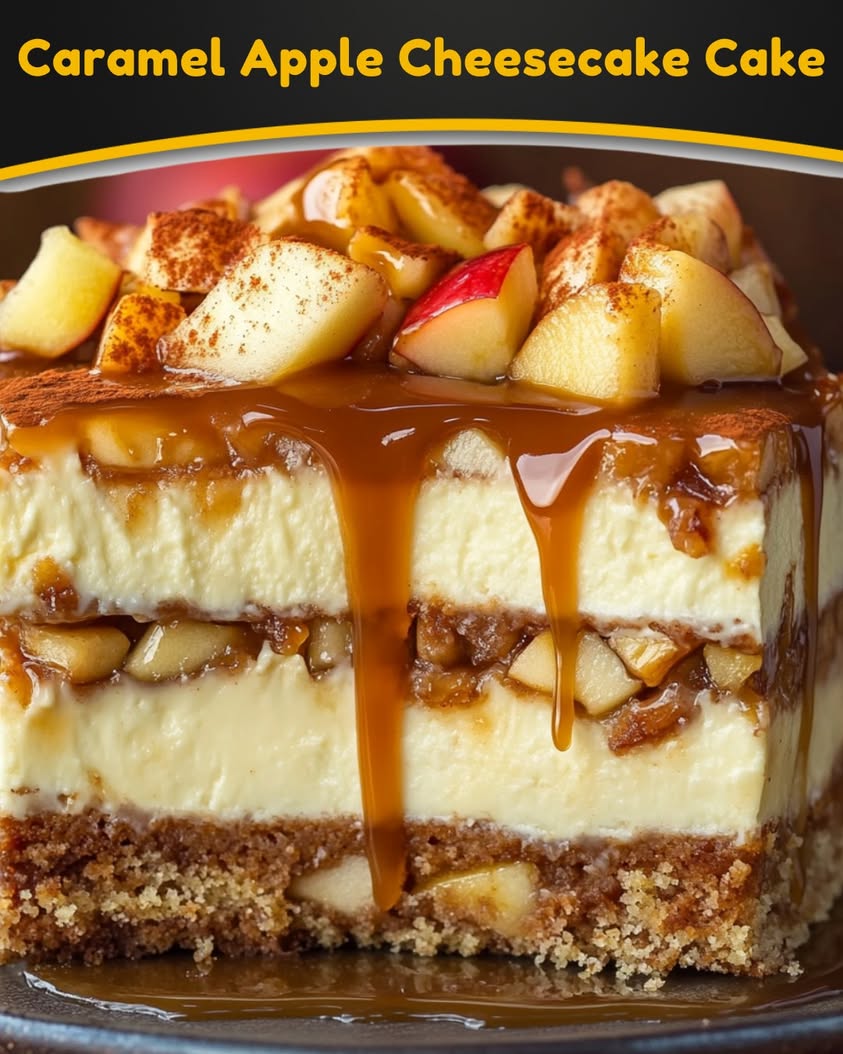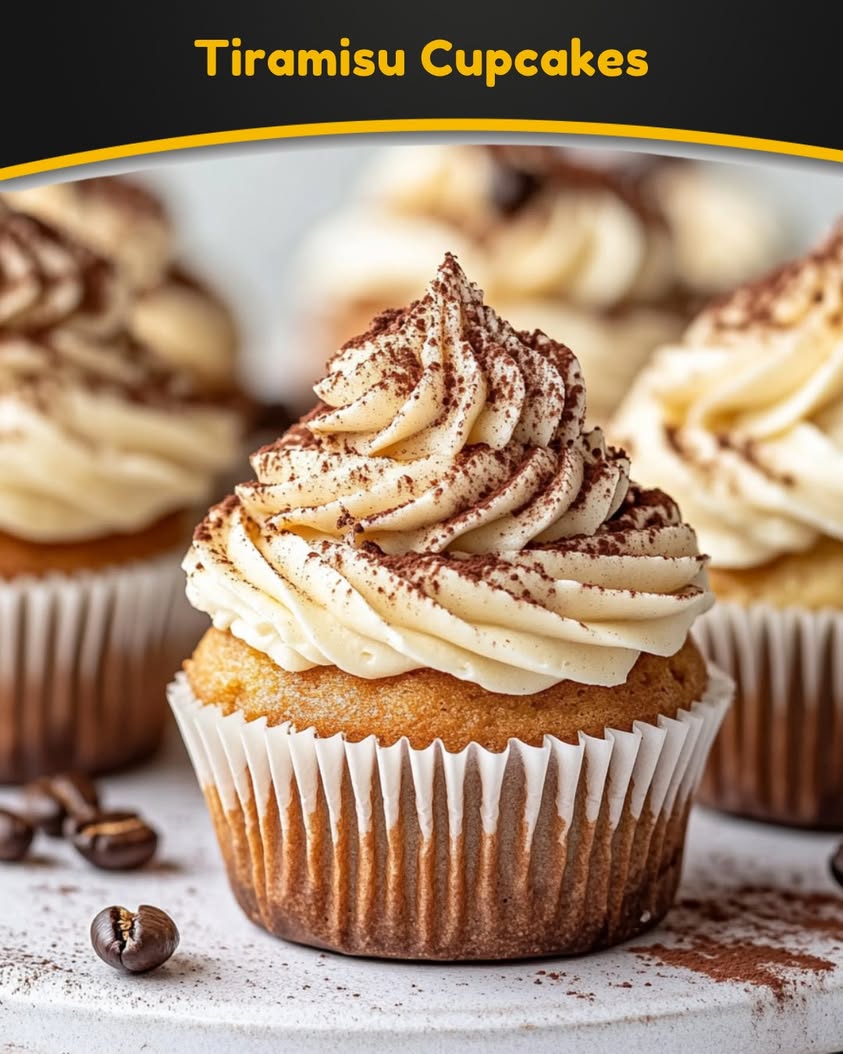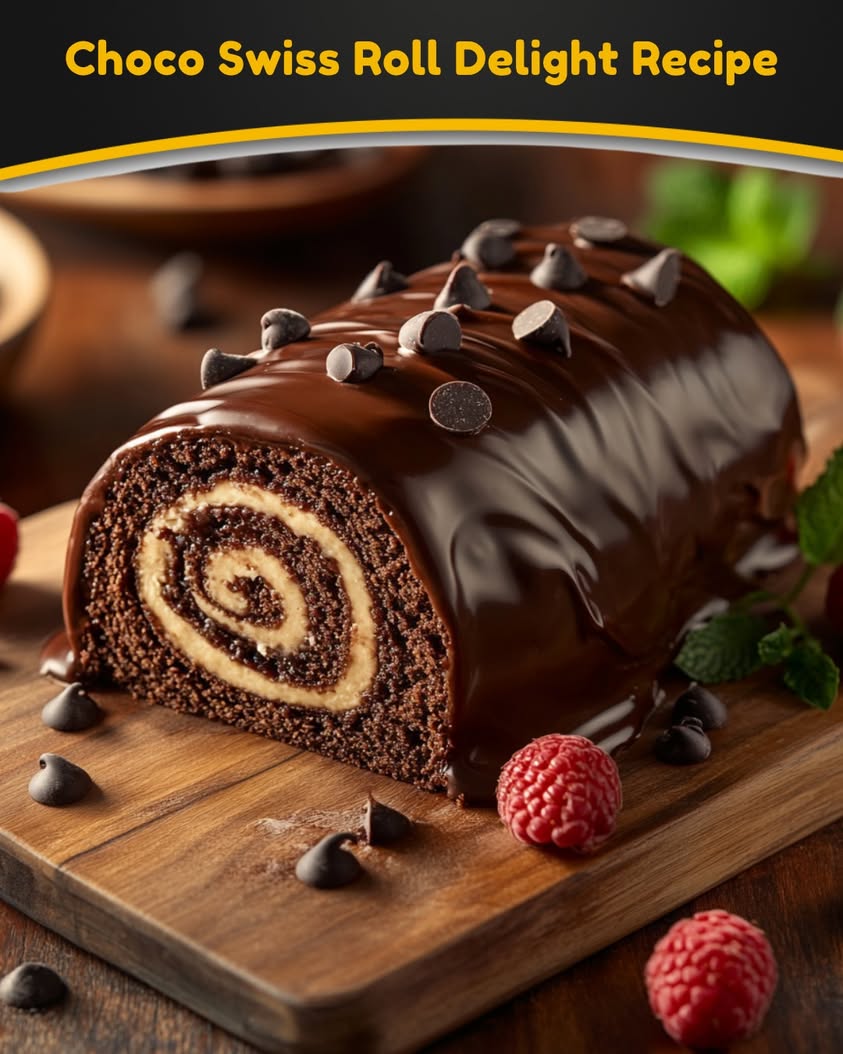Cowboy Cookies: A Sweet Adventure Awaits
Cowboy cookies are the perfect blend of hearty and sweet, bringing you a taste of the rugged frontier with every bite. These delightful cookies combine the classic flavors of chocolate, oats, and nuts, creating a uniquely satisfying dessert that’s as adventurous as its name suggests. With each crunchy morsel, you’ll experience an explosion of textures and sweetness that will make you smile. Whether enjoyed by the campfire or at home, these cookies are destined to become a favorite that your family will revere!
The beauty of cowboy cookies lies not just in their taste, but in their heartwarming memories. Originating from the rugged U.S. West, they were originally crafted to be hearty enough to sustain cowboys on long treks. The addition of oats provides a soulful fiber, while the nuts and chocolate represent the bounty of the land. This recipe captivates your taste buds and evokes the spirit of adventure, nostalgia, making you feel connected to the open ranges and the thrill of the wild West!
Quick Recipe Highlights
- Flavor Profile: A delightful combination of sweet chocolate, nutty undertones, and the wholesome flavors of oats and coconut.
- Texture: A perfect balance of chewy and crunchy, with crispy edges and a soft, moist center.
- Aroma: The warm, inviting scent of baked cookies complemented by the rich aroma of chocolate and toasted nuts fills the kitchen.
- Visual Appeal: Beautifully golden-brown with speckles of chocolate and nuts, these cookies are as pleasing to the eye as they are to the palate.
- Skill Level Needed: Intermediate; these cookies require a few techniques but are easy for any home baker to master.
- Special Equipment: A standard oven, mixing bowls, a baking sheet, and parchment paper is all that you need.
Recipe Overview
- Difficulty Level: The recipe is rated as intermediate, needing some comfort with mixing and baking, but accessible for enthusiastic bakers.
- Category: These cookies can be enjoyed as a dessert, snack, or even a breakfast treat, making them versatile across any meal occasion.
- Cuisine: Cowboy cookies harken back to old-school American frontier traditions, combining influences from traditional baking with hearty ingredients.
- Cost: The ingredients for cowboy cookies are fairly economical, averaging around $8-$10 for a batch that yields about 24 cookies.
- Season: Perfect for any season but especially in winter and fall when warm cookies provide comfort and cheer.
- Occasion: Ideal for picnics, bake sales, or simply as a delightful afternoon treat, these cookies are ready for any gathering.
Why You’ll Love This Recipe
Cowboy cookies not only enchant the palate with their wonderful taste profile, but their texture creates an unforgettable eating experience. The chewy oats combined with crispy nuts and melting chocolate deliver layers of flavor and texture that are nothing short of divine. Each bite invites you to savor the contrasts—crunchy against soft, sweet against nutty—and together they craft an exceptional treat that is both comforting and satisfying.
The convenience of this recipe allows for an effortless preparation process, making it a go-to choice for busy bakers and novice chefs alike. With just a few mixing bowls and a baking sheet, you can whip together a batch of these delicious cookies in no time. Plus, they keep wonderfully, so you can bake in advance and enjoy them for days, which is especially handy during gatherings or holiday events.
Nutritionally, cowboy cookies offer some benefits over standard cookies, thanks to their inclusion of oats and nuts. Oats are a fantastic source of fiber, which can help keep you full longer, and the nuts provide healthy fats, protein, and vitamins. It’s a snack that feels indulgent yet has some reassuring nutritional elements, ensuring that you can delight in a treat while prioritizing your health.
Cowboy cookies are also a social treat, perfect for sharing with friends and family. They are great for any gathering, from casual picnics to more formal events. Their rustic charm prompts conversations, creating an inviting atmosphere wherever they are served. They evoke warmth and nostalgia, making them a delightful addition to your recipe repertoire.
Finally, the cost-effectiveness of cowboy cookies stands out. With basic pantry ingredients, you can create a generous amount of cookies that are far cheaper than store-bought alternatives. You can invest in high-quality ingredients or customize them with fruits, chocolates, or nuts to suit your taste without breaking the bank.
Historical Background and Cultural Significance
Cowboy cookies originate from the heart of American frontier history, a time when sustenance was essential for survival. These cookies were born from a unique blend of practicality and indulgence, created by those who needed a portable, energy-rich snack. They symbolize the hearty, no-nonsense spirit of the cowboys who roamed the open plains, offering a simple yet delightful comfort food.
As American culture evolved, so did the significance of cowboy cookies, becoming a cherished staple in homes across the country. They became part of tradition during gatherings, where families came together to share food, stories, and memories. Today, they represent a connection to the past, grounding those who enjoy them in the rich tapestry of American cooking.
The evolution of cowboy cookies has seen the addition of various ingredients over the years, adapting them to suit regional tastes and availability. From the traditional chocolate chip to the modern inclusion of nuts and dried fruits, each variation tells its own story, demonstrating how this beloved cookie has changed and adapted.
Regional variations have also added depth to the cultural significance of cowboy cookies. In some areas, bakers may incorporate local ingredients, display different textures, or emphasize unique flavor profiles that pay homage to their origins. This showcases the versatility of cowboy cookies, proving that while they’re rooted in history, they continue to inspire creativity and experimentation in kitchens everywhere.
Ingredient Deep Dive
Oats
Oats have a rich history as a staple grain, resilient to harsh climates and a dietary necessity for many cultures. They are not only filling but provide substantial health benefits, such as lowering cholesterol and improving digestion. When selecting oats for your cookies, look for old-fashioned rolled oats for the best texture. Store them in an airtight container to maintain freshness.
Chocolate Chips
Originating from the chocolate craze of the early 20th century, chocolate chips have become a beloved component of many desserts. Not only do they add sweetness, but dark chocolate offers antioxidants and potential heart benefits. When selecting chocolate, choose high-quality dark or semi-sweet variations for more flavor. Keep them cool, ideally in a sealed container, to prevent clumping.
Nuts
Nuts bring not only crunch but a plethora of nutrients, including healthy fats, protein, and essential minerals. They can vary greatly in flavor and texture; walnut is often favored in cowboy cookies. When selecting nuts, ensure they are fresh and not rancid, opting for raw or lightly salted varieties. Store nuts in a cool place or the refrigerator for maximum freshness.
Brown Sugar
Brown sugar’s molasses content gives depth to the sweetness and adds moisture to baked goods. It’s a versatile ingredient, perfect for adding flavor to cookies. When measuring, ensure it’s packed tightly in the cup for accurate amounts. It should be stored in an airtight container to prevent hardening.
Coconut Flakes
Coconut flakes originated in tropical regions and provide a unique sweetness and texture to desserts. Rich in fiber and adding a chewy bite, they elevate cowboy cookies to another level. Ensure you choose unsweetened flakes to control the sugar levels, and store them in a cool, dry place to retain their freshness.
Common Mistakes to Avoid
- Using quick oats instead of rolled oats results in a mushy texture; always opt for rolled oats for best results.
- Overmixing the dough can cause cookies to turn tough, so mix just until combined.
- Not chilling the dough can lead to cookies spreading too much, losing their shape during baking.
- Skipping the baking sheet lining can make removal difficult and lead to sticking; always line with parchment paper.
- Not measuring ingredients accurately can throw off the balance, so always use the correct measuring cups for dry and wet ingredients.
- Using expired baking soda or powder can yield cookies that don’t rise properly; always check the freshness of these ingredients.
- Overbaking can result in dry cookies; watch closely and remove them when they are lightly golden.
- Ignoring the cooling time can prevent the cookies from setting correctly, leading to a crumblier texture.
- Substituting ingredients without considering moisture content can affect the final texture and taste; be mindful of replacements.
- Not allowing cookies to fully cool before storing can lead to sogginess due to trapped steam; let them cool completely.
Essential Techniques
Prepping the dough involves mixing the dry and wet ingredients separately before combining them to ensure an even distribution of flavors and textures. This method ensures your cookies don’t end up too dense or dry. Make sure to cream the butter and sugars well, which helps aerate the mix for a lighter texture.
Baking the cookies evenly is crucial, so rotate the tray halfway through the baking process. This ensures that both the front and back of the tray receive equal heat, preventing uneven baking. Visual cues such as a lightly golden color around the edges will indicate that your cookies are done but may need a minute or two to firm up off the heat.
Pro Tips for Perfect Cowboy Cookies
To achieve the perfect cowboy cookies, use room temperature ingredients. This aids in easier mixing and ensures a uniform dough consistency throughout. For a deeper flavor, consider toasting the nuts before adding them to the mix; this amplifies their nuttiness and crunch.
Experiment with different chocolate types. Mixing milk chocolate with dark chocolate chips can create a unique flavor profile that balances sweetness with richness. If you desire a touch of saltiness, sprinkle coarse sea salt on top before baking or just after they come out of the oven; this creates a delightful contrast to the sweetness.
Chill the dough for at least 30 minutes before baking for a firmer texture that makes scooping easier. If you prefer chewy cookies, aim for slightly underbaked ones; they will continue to cook on the baking sheet as they cool, leading to the ideal balance of chewy and crispy.
Using a cookie scoop for portioning helps create uniform cookies that bake evenly. Finally, store leftovers in a sealed container with a slice of bread to keep them soft; the bread will absorb moisture, preventing them from becoming hard and stale.
Variations and Adaptations
Consider making regional variations such as adding dried fruits like cranberries or cherries, which can provide a lovely tartness to contrast the sweetness. For seasonal adaptations, try incorporating pumpkin spice during the fall or mint extract and mint chocolate chips during the holidays for a festive flair.
If you’re opting for dietary modifications, gluten-free alternatives can easily be achieved by using almond flour or a certified gluten-free flour blend. For vegans, replace eggs with flaxseed meal mixed with water or a commercial egg replacement.
Flavor variations are endless; experiment with butterscotch or peanut butter chips instead of chocolate for a new twist. Adjusting texture can also be fun—add pretzels for a salty crunch or shredded coconut for chewiness. For presentations, consider stacking the cookies with layers of parchment paper for a rustic look or drizzling melted chocolate on top for visual appeal.
Serving and Presentation Guide
For an inviting plate presentation, arrange cookies in a staggered manner, allowing small gaps between them to showcase their textures. Garnishing with fresh mint leaves or sprigs can lend a decorative touch and introduce a refreshing aroma. Consider pairing with a glass of cold milk, which resonates with classic cookie nostalgia, or serve warm alongside a scoop of ice cream for a decadent dessert experience.
Temperature considerations play a pivotal role in enjoying your cookies. Serve them slightly warm to enhance the gooey chocolate texture or let them cool for a firm bite. For portion control, utilize a cookie scoop for consistent sizing so guests can indulge without the temptation to eat too many at once.
For breakfast presentations, crumble cookies over yogurt or oatmeal, adding fruit for a nutritious start. Plating in mason jars can create an appealing layered dessert, and serving them during a gathering with accompanying ice cream toppings can elevate the experience.
Wine and Beverage Pairing
For the perfect wine pairing, consider a rich red wine like Merlot or a dessert wine like Port, which complements the sweetness of the chocolate and nuts in the cookies. These wines can enhance the flavor profile, providing a luxurious experience.
If you prefer non-alcoholic alternatives, a creamy vanilla milkshake highlights the cookies’ texture beautifully. Tea lovers will enjoy pairing these cookies with chai or Earl Grey for a warm, comforting experience that blends perfectly with the cowboy cookie flavors.
If opting for coffee, a dark roast or espresso emphasizes the chocolate richness, providing a satisfying contrast. Serve these beverages warm or chilled based on your preference for a flavorful pairing that indulges your senses and complements the cookies.
Storage and Shelf Life
Storing your cowboy cookies properly ensures they maintain their delightful taste and texture. Keep them in an airtight container at room temperature for up to one week. If you’d like to extend their shelf life, consider refrigerating them—but be aware that this may change their texture to be firmer than fresh-out-of-the-oven cookies.
Signs of spoilage include changes in texture (becoming hardened or overly soft) or any off-smelling aromas. For reheating, pop them in the microwave for a few seconds or in a preheated oven to regain their warm, gooey state.
If you’d like to freeze your cookies, arrange them in a single layer on a baking sheet until solid, then transfer them to a freezer bag. This method helps prevent them from sticking together and allows you to grab just as many as you desire later. Properly stored, they can last up to three months in the freezer.
Make Ahead Strategies
To enjoy fresh cowboy cookies without the hassle, prepare the dough in advance and store it in the fridge for up to three days. This allows flavors to meld and can enhance the cookie’s overall taste.
You can also mix and scoop the cookies, placing them on a baking sheet covered with plastic wrap, and freeze them before baking. When you’re ready, simply bake from frozen, adding a couple extra minutes to the baking time for perfect cookies every time.
When planning for a gathering, consider preparing the dough and letting it sit overnight; this will deepen the flavors. For an additional layer of freshness, you can add nuts, chocolate chips, or spices closer to baking time.
If you intend to serve them a few days later, bake batches in advance, allowing them to cool completely before storing in an airtight container. This ensures they’ll still have the delicious flavor everyone loves when it’s time to enjoy them.
Scaling Instructions
Scaling the recipe is straightforward. To halve the batch, simply divide each ingredient by two to maintain the same ratios, making it a great option for smaller gatherings. If you’re doubling or tripling the recipe, be mindful of using larger bowls and baking sheets that can accommodate increased volume.
Timing modifications should also be considered, as larger batches may require slightly longer baking or cooling times. Always check for doneness by looking for the golden edges and while they’re lively in the center.
For storage, ensure your containers are appropriately sized for the total number of cookies you’ve baked. For the best quality, use more than one container if necessary to prevent them from becoming stale too quickly. Making batch-sized adjustments also allows for variety in flavors and add-ins.
Nutritional Deep Dive
Cowboy cookies are typically packed with carbohydrates, fats, and protein. A macro breakdown per cookie may include approximately 150 calories, with a combination of about 7 grams of fat, 20 grams of carbohydrates, and 2 grams of protein. These cookies provide a quick energy boost thanks to their rich sugar and fat content.
Micronutrient analysis reveals that the oats help contribute fiber, which is valuable for digestive health. Nuts add essential minerals such as magnesium, vitamin E, and B-vitamins, enhancing overall nutritional value.
For health benefits, they provide a satisfying sweet treat that can curb cravings without overindulgence. The healthy fats from nuts can contribute to heart health, while dark chocolate offers potential antioxidant benefits. A careful assessment of portion control can further manage caloric intake, allowing you to enjoy these cookies as part of a balanced diet.
Dietary considerations are essential as well; these cookies can fit into various lifestyles without feeling like a typical guilty pleasure. Evaluating overall health goals when consuming treats allows for mindful indulgence.
Dietary Adaptations
To create gluten-free cowboy cookies, substitute regular flour with almond or gluten-free all-purpose flour, ensuring equal weight for similar texture and taste. These adaptations increase accessibility for those with dietary restrictions.
For a dairy-free version, you can replace butter with coconut oil or vegan butter alternatives, making it suitable for a wider audience.
Incorporating vegan options is easy; substitute the eggs with a chia seed mix or applesauce to bind the ingredients without compromising texture.
Low-carb or keto adaptations can also be achieved by replacing sugar with erythritol or stevia for a sugar-free treat that still satisfies.
Paleo followers can swap the flour for almond flour and use natural sweeteners like honey or maple syrup. Customizing the recipe encourages flexibility, allowing it to cater to various dietary lifestyles.
Troubleshooting Guide
If you encounter texture issues, such as cookies being too crumbly or dry, consider checking ingredient ratios, particularly your flour and fat content. You may need to adjust the moisture by adding a teaspoon of milk or water to the dough.
For flavor balance, if the cookies are overly sweet, you may want to slightly reduce the sugar in the next batch or add a pinch of salt to enhance other flavors.
Temperature problems during baking can arise if your oven’s calibration is off. Always check with an oven thermometer to ensure accuracy, and adjust baking times accordingly to prevent under or overbaking.
Common equipment challenges include not utilizing the right bakeware; dark pans may lead to uneven baking. Use light-colored stoneware or insulated baking sheets for a more consistent result.
If substitutions lead to issues, always start small when replacing ingredients. For instance, overly swap flour types, measure by weight to ensure accuracy.
Timing concerns can often lead to disappointing results. Set timers for testing cookie doneness, and if you’re ever in doubt, underbake slightly; cookies will firm up on the sheet after removal.
Recipe Success Stories
Community feedback often highlights how cowboy cookies resonate with nostalgia, prompting those who made them as children to revisit the beloved recipe for a sense of comfort. Bakers fondly recall how their mothers or grandmothers would whip them up; recreating this tradition has become a sentimental approach for families.
Variation successes abound, with bakers experimenting with different flavors that resonate with their personal tastes. It’s common to hear about delicious adaptations, like adding white chocolate or peanut butter chips, which individuals swear by for a signature twist that becomes local lore.
Reader suggestions often inspire community engagement as they share their unique adaptations, creating a lively exchange of ideas. Photography tips flood in, with followers showcasing their favorite cookie poses alongside cups of steaming coffee, building a vibrant exchange on visual presentation.
For those capturing their baking on social media, encouraging them to tag you can create a warm sense of community. Celebrating their successes with cookies can result in motivation to bake more, fueling their cooking journey, and spreading joy—from your recipe to their kitchen.
Frequently Asked Questions
Can I freeze cowboy cookie dough?
Yes! You can freeze the dough by scooping it onto a baking sheet and freezing until solid, then placing them in a freezer-safe bag. When you’re ready to bake, just add a couple of extra minutes to the baking time.
What’s the best way to store baked cookies?
Store baked cowboy cookies in an airtight container at room temperature for up to a week. You can also use a slice of bread in the container to keep them soft longer.
Can I use other types of flour?
Yes, you can substitute all-purpose flour with gluten-free flour, almond flour, or even coconut flour for variations. Be aware that ratios may need to be adjusted based on the flour type.
Are these cookies nut-free?
Cowboy cookies traditionally have nuts, but you can easily adapt the recipe by omitting them or replacing them with seeds or more oats for a nut-free version.
Can I make these cookies vegan?
Absolutely! Replace the eggs with a banana, flaxseed meal, or applesauce. Use vegan butter or coconut oil to substitute regular butter.
How do I make them chewier?
For chewier cookies, try using more brown sugar than granulated sugar, and ensure you do not overbake them. Remove them from the oven when they are slightly underdone.
What’s the best chocolate to use?
For rich flavor, opt for dark chocolate chips or chunks, but feel free to mix in milk chocolate or white chocolate for a sweeter side!
Can I add dried fruits?
Yes! Adding dried fruits like cranberries or raisins adds an enjoyable chew and fruity flavor that complements the richness of the cookies.
How thick should I scoop the cookies?
Scoop about 2 tablespoons of dough for each cookie for the best thickness. This allows for a well-balanced size that bakes evenly throughout.
What substitutions can I make for allergies?
If you’re allergic to eggs, substitute with flaxseed meal or applesauce, and if you’re gluten sensitive, opt for gluten-free flour blends.
Additional Resources
For those looking to expand their cookie repertoire, consider exploring our related recipes, including oatmeal raisin cookies and chocolate chip variations that offer delightful twists on beloved classics.
Delve into technique guides that go in-depth on baking basics, such as how to properly cream butter and sugar for fluffy cookies, which is crucial for maintaining the right texture and flavor balance.
For ingredient information, we provide detailed profiles on pantry staples and alternative options for various dietary choices, helping you navigate substitutions and enhancements in recipes.
Finally, check out our equipment recommendations—baking sheets, measuring cups, and mixers—all essential for creating bakery-quality treats in your home kitchen. Armed with these resources, you’ll become a cowboy cookie connoisseur in no time!
Join the Conversation
We encourage you to share your baking adventures and any variations you’ve made with cowboy cookies. Consider snapping some photos and tagging us on your social media platforms to inspire fellow bakers.
We’re keen to hear your recipe reviews and experiences! Engaging with our baking community enhances the joy of sharing these treats and continues to create new histories with beloved family recipes.
Explore ideas, tips, and more as you dive into your cowboy cookie creations. Every cookie bakers’ journey shapes individual stories that connect us through the love of food. Let’s keep the delicious conversation alive with cowboy cookies!
The Recipe
Cowboy Cookies
Serves: 24 cookies
Prep Time: 15 mins
Cook Time: 10 mins
Total Time: 25 mins
Kitchen Equipment Needed
- Baking sheets
- Mixing bowls
- Measuring cups and spoons
- Cookie scoop
- Parchment paper
Ingredients
- 1 cup butter, softened
- 1 cup brown sugar
- 1/2 cup granulated sugar
- 2 large eggs
- 2 teaspoons vanilla extract
- 2 cups all-purpose flour
- 1 teaspoon baking soda
- 1/2 teaspoon salt
- 3 cups rolled oats
- 1 cup chocolate chips
- 1 cup chopped nuts (walnuts or pecans)
- 1 cup coconut flakes (optional)
Directions
- Preheat the oven to 350°F (175°C) and line baking sheets with parchment paper.
- In a large mixing bowl, cream together the softened butter, brown sugar, and granulated sugar until light and fluffy.
- Add the eggs one at a time, beating well after each addition; then mix in the vanilla extract.
- In a separate bowl, whisk together the flour, baking soda, and salt.
- Gradually add the dry ingredients to the wet ingredients, mixing until just combined.
- Fold in rolled oats, chocolate chips, nuts, and coconut flakes if using.
- Scoop dough by tablespoonfuls onto prepared baking sheets, spacing them 2 inches apart.
- Bake for 10-12 minutes or until golden around the edges but still soft in the center.
- Cool on the baking sheets for about 5 minutes before transferring to a wire rack to cool completely.
Recipe Notes
- To enhance flavor, consider toasting the nuts before adding them to the dough.
- For extra chewy cookies, underbake them slightly and store in an airtight container with a slice of bread.
- Feel free to adjust the mix-ins based on your preferences; raisins or dried berries can be a delicious addition!
